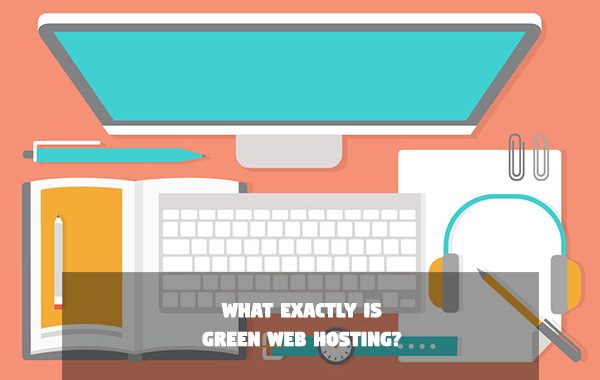In order to make the internet work, we need lots and lots of machines that host servers, often in large data centres. And those machines take space. And lots and lots of energy. As people demand more and more internet use, this is going to become a resource issue unless we develop in a conscious way.
That’s where “Green Web Hosting” comes in
What Exactly is Green Web Hosting?
As with anything that takes energy, we have a choice as to where our resources come from. Green web hosting means servers that use renewable energy and other mechanisms to reduce their environmental impact.
Unfortunately, even the largest web hosting companies will only take up a small portion of a data centre.
As such, it’s quite impractical to expect them to dictate demands on data centres regarding eco-friendliness. Thankfully however, many of them have realized that while this may be the case, there are still ways in which they can contribute towards the health of the environment.
The primary means that web hosts give back to the environment is through renewable energy or carbon offsets.
Renewable energy that is produced using naturally occurring resources such as the sunlight, wind, or even water. These are replenished naturally and their conversion for use doesn’t require the burning of fossil fuels, resulting in highly efficient, clean energy.
Why Go Green?
Most web hosts are currently using generators that rely on fossil fuels. As the number of websites and corresponding demand for servers goes up worldwide, the demand for electricity does as well. If we don’t set up the renewable energy infrastructure we need to replace carbon, we’re threatening natural resources and contributing to environmental problems.
Internet Carbon Footprint
The Internet is far beyond its fledgling days and is growing exponentially at rates never seen before. User-generated content has evolved from what was plain text into multiple formats of multimedia including audio and video.
All this content is hosted on servers, the majority of which are housed in data centres.
These massive facilities house ranks upon ranks of servers that handle everything from corporate websites to personal blogs. These servers need to be kept running in cooled, controlled environments, so they require a large amount of energy and have a significant carbon dioxide (CO2) output. That makes them less than optimal for our environment.
For the average person who develops content, usually a service provider such as a web host is used. From the comfort of our homes or offices, we sign up, pay and manage content digitally and never even step foot in a data centre, so how does it affect us?
It all goes back to the fact that ultimately, we are still the ones driving data centre usage. Although we sign up with a web host, for example, that web host still needs to house equipment in a data centre.
Renewable Energy Certificates (REC)
Of course, since they can’t dictate this to their data centre, the alternative is through Renewable Energy Certificates (RECs), or Renewable Energy Credits.
RECs are generated by companies that specialize in creating renewable energy. By purchasing these, a web host can certify that they have helped in the generation of a certain amount of renewable energy. In turn the company that sells the RECs gets money to cover operational costs as well as invest in additional green energy initiatives.
Carbon Offset Certificate (VER)
Aside from RECs, the other option is to choose Carbon offsetting, or VERs, which is another type of program. The key distinction here is that while RECs certify that clean energy has been generated, VERs simply certify that greenhouse gases have been reduced somewhere in an equivalent amount as the certificate states.
Internet’s annual CO2 output: How big an impact does all this cause?
Rather than list down everything associated with and contributing to the Internet’s annual CO2 output, let’s consider a few simple examples that would cause it’s equivalent:
- 31 million cars driving round the world once
- A Boeing 747 flying to the moon and back 5,674 times
- The countries of Sri Lanka, Hong Kong, Singapore, The Philippines and Mongolia combined
According to Environmental Research Letters, based on estimation, just the data centres located in the US would require about 135 billion kWh by 2020. However, the growth of data center electricity use beyond 2020 is still uncertain.
Aside from data centres, the leading consumer electronics companies are not doing good enough to address their environmental impacts as well:
- Samsung used more than 16,000 GWh of energy in 2016, with just 1% coming from renewables
- Chinese smartphone leaders (Huawei, Oppo, and Xiaomi) occupied over a quarter of the global market share in quarter two of 2017, yet losing in green commitment
- Worldwide e-waste volumes are expected to surpass 65 million metric tons in 2017
How to Tell if Your Host is Green?
This is straight forward: If your host is Green, they will tell you, loudly and proudly!
Going green is often a significant investment in cash for a web host, and you can be sure they will let you know. While not all will always display their Green certificate, the amount of information they make available to you regarding their green initiatives of often a reflection of their investment.

